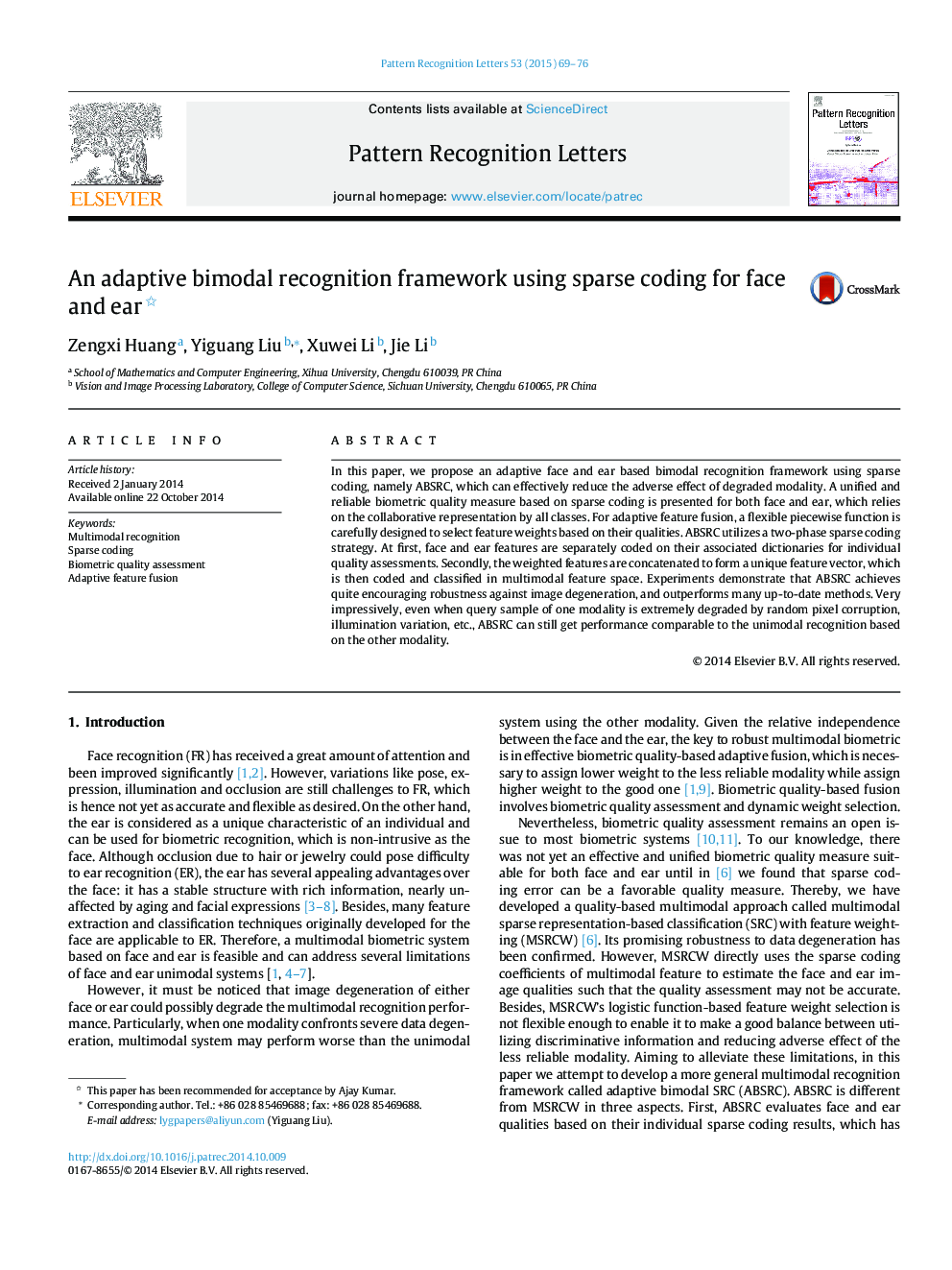| کد مقاله | کد نشریه | سال انتشار | مقاله انگلیسی | نسخه تمام متن |
|---|---|---|---|---|
| 535285 | 870336 | 2015 | 8 صفحه PDF | دانلود رایگان |
• A refining sparsity-based biometric quality measure suitable for both face and ear.
• Flexible piecewise feature weight function can better cope with data degeneration.
• A two-phase sparse coding strategy facilitates precise quality assessments.
• Considerable illustrations of quality-based fusion and comprehensive experiments.
In this paper, we propose an adaptive face and ear based bimodal recognition framework using sparse coding, namely ABSRC, which can effectively reduce the adverse effect of degraded modality. A unified and reliable biometric quality measure based on sparse coding is presented for both face and ear, which relies on the collaborative representation by all classes. For adaptive feature fusion, a flexible piecewise function is carefully designed to select feature weights based on their qualities. ABSRC utilizes a two-phase sparse coding strategy. At first, face and ear features are separately coded on their associated dictionaries for individual quality assessments. Secondly, the weighted features are concatenated to form a unique feature vector, which is then coded and classified in multimodal feature space. Experiments demonstrate that ABSRC achieves quite encouraging robustness against image degeneration, and outperforms many up-to-date methods. Very impressively, even when query sample of one modality is extremely degraded by random pixel corruption, illumination variation, etc., ABSRC can still get performance comparable to the unimodal recognition based on the other modality.
Journal: Pattern Recognition Letters - Volume 53, 1 February 2015, Pages 69–76
